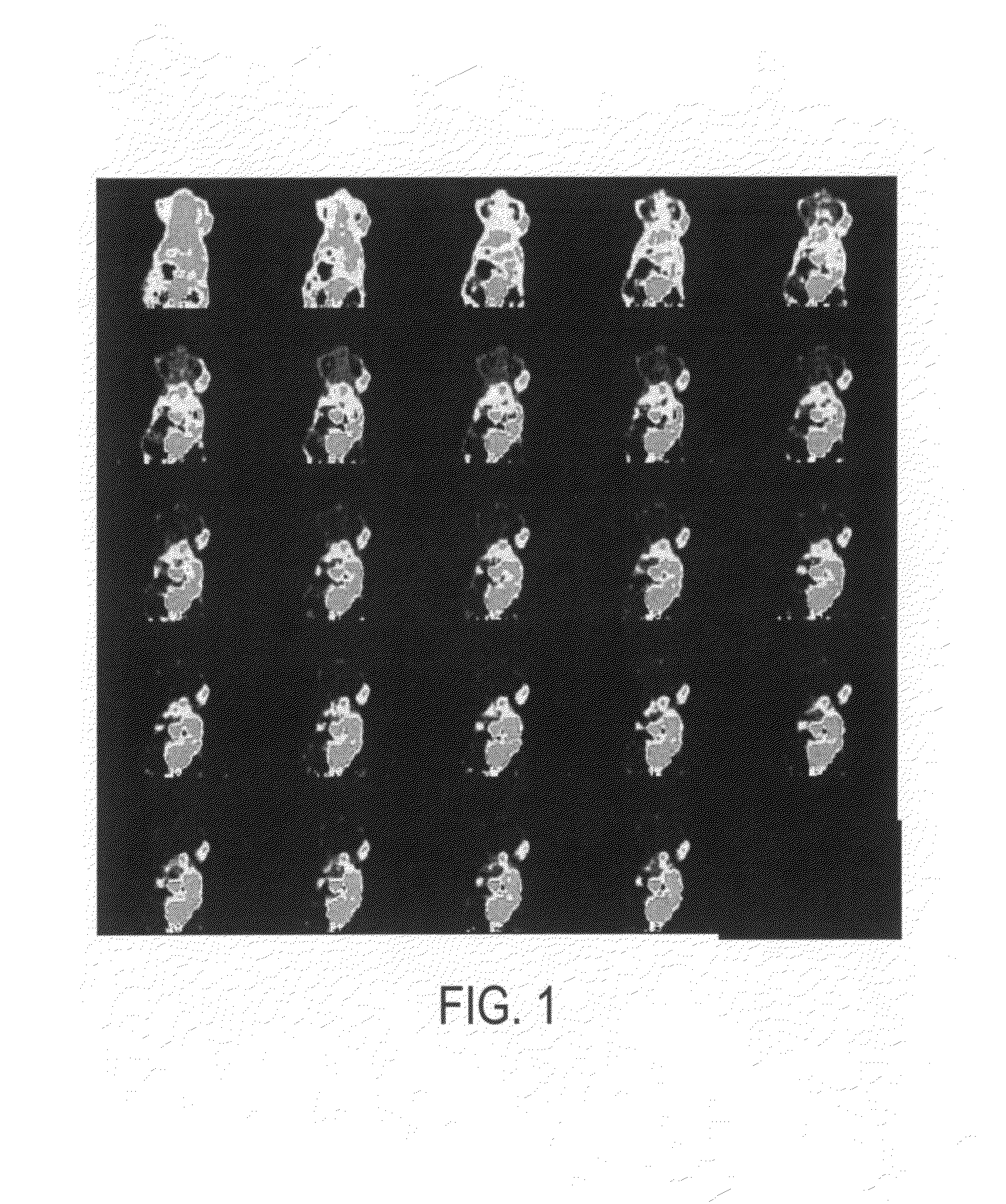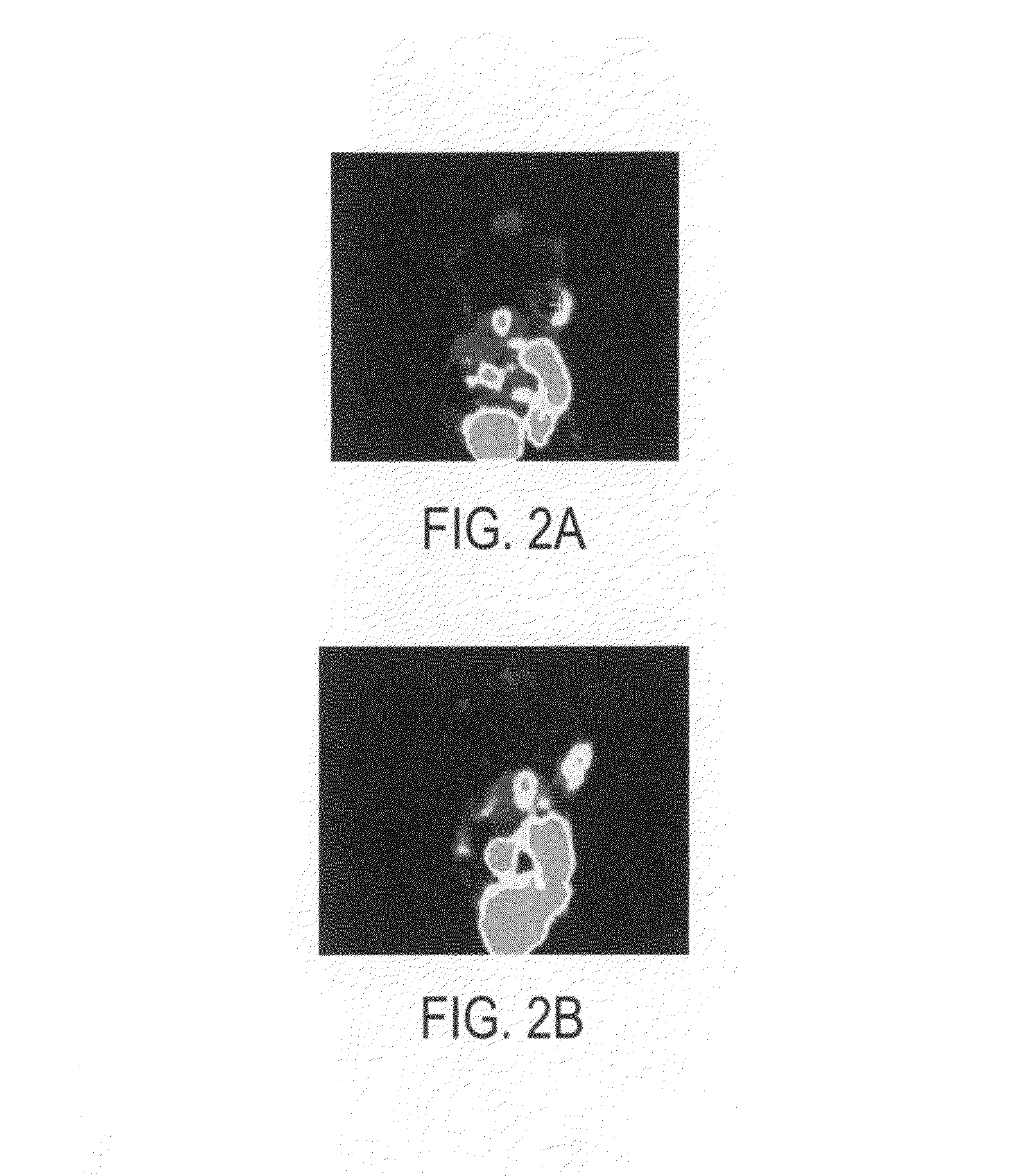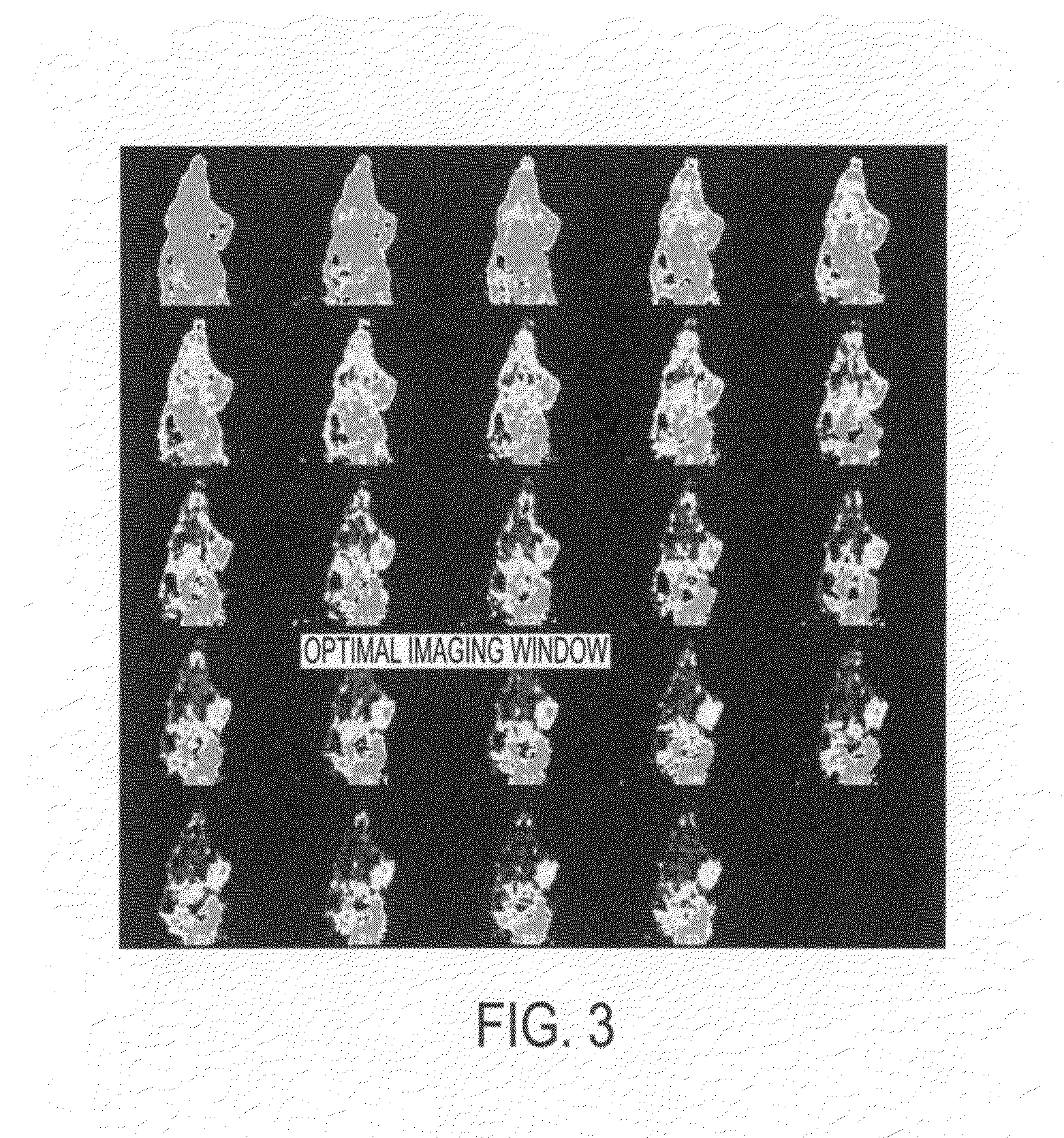Click chemistry-derived cyclopeptide derivatives as imaging agents for integrins
a cyclopeptide and imaging agent technology, applied in the field of radiolabeled cyclic polypeptides, can solve the problems of limiting the exploration of improved derivatives, the difficulty of detecting lesions in the abdomen, and the use of these imaging agents as standard clinical biomarkers, so as to improve pharmacokinetic properties, improve the binding affinity of integrin, and improve the effect of pharmacokinetic properties
- Summary
- Abstract
- Description
- Claims
- Application Information
AI Technical Summary
Benefits of technology
Problems solved by technology
Method used
Image
Examples
examples
[0213]The novel cyclopeptide analogs presented in this application are prepared using click chemistry [10-18]. Click chemistry, as used in this application, describes the rapid, selective and specific formation of 1,4- or 1,5-disubstituted 1,2,3-triazoles starting from alkyl azides and terminal alkynes. One or more triazole moieties are attached to the cyclic peptide, the hydrophilic linker, or the radiolabel tag. Click chemistry is a high-yielding and modular approach and as such, the pharmacokinetic properties of these cyclopeptide analogs are easily modified.
[0214]Scheme I demonstrates an exemplary reaction scheme for the synthesis of a cyclohexane based galactose mimic. 1,4-Cyclohexadiene is mono-epoxidized using one equivalent of m-chloroperoxybenzoic acid. Sodium azide, in a buffered ammonium chloride solution, is used to open the mono-epoxide. The remaining alkene is epoxidized using t-butyl hydroperoxide, along with a catalytic amount of vanadyl acetylacetonate, to form the ...
PUM
| Property | Measurement | Unit |
|---|---|---|
| hydrophilic | aaaaa | aaaaa |
| nuclear imaging | aaaaa | aaaaa |
| positron emission tomography | aaaaa | aaaaa |
Abstract
Description
Claims
Application Information
 Login to View More
Login to View More - R&D
- Intellectual Property
- Life Sciences
- Materials
- Tech Scout
- Unparalleled Data Quality
- Higher Quality Content
- 60% Fewer Hallucinations
Browse by: Latest US Patents, China's latest patents, Technical Efficacy Thesaurus, Application Domain, Technology Topic, Popular Technical Reports.
© 2025 PatSnap. All rights reserved.Legal|Privacy policy|Modern Slavery Act Transparency Statement|Sitemap|About US| Contact US: help@patsnap.com



